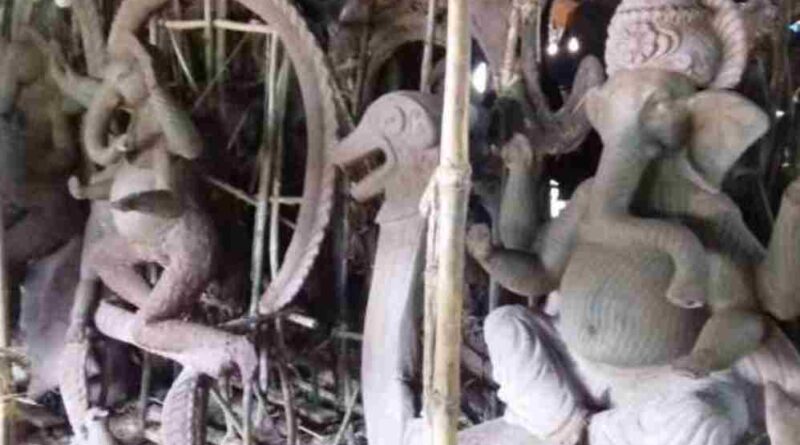Three Artisans in Indore Booked Over Controversial Ganesh Idols Following Bajrang Dal Complaint
In a fresh controversy that has sparked debate across religious, artistic, and legal circles, three artisans from Indore have been booked by the local police after a complaint was filed alleging that their crafted Ganesh idols were “objectionable” in nature. The complaint, raised by members of the Bajrang Dal, claims the idols violated traditional religious norms and hurt the sentiments of the Hindu community.
The artisans, whose identities are being withheld for security reasons, were in the final stages of preparing clay Ganesh idols for the upcoming Ganesh Chaturthi festival. According to the complainants, the idols portrayed Lord Ganesh in an “inappropriate and distorted” manner that was deemed disrespectful to religious beliefs.
The issue gained traction after a few images of the idols circulated on social media, drawing both criticism and support. While some users echoed concerns over religious sentiment, others defended the artisans’ freedom of expression and the evolving nature of art in contemporary religious festivals.
Police Response and Legal Action
Indore police acted swiftly following the complaint and registered a case against the three artisans under relevant sections of the Indian Penal Code pertaining to religious hurt and public mischief. The idols in question were seized from the workshop and sent for further inspection.
A senior police officer confirmed that a preliminary investigation is underway. “We are assessing whether the depiction was intentionally offensive or if it was a misinterpretation. Our goal is to maintain peace and prevent any escalation,” he said.
The artisans reportedly claimed that there was no intention to offend and that the designs were inspired by popular trends and creative expressions often seen in larger metro cities. They emphasized that the idols were handcrafted with devotion and were intended to offer something visually unique for devotees during the upcoming festival.
Rising Tension and Polarized Reactions
The incident has ignited a debate over the thin line between artistic freedom and religious sensitivity. While organizations like the Bajrang Dal have called for stricter regulation and a ban on modern depictions of deities that stray from “traditional” forms, local art communities have voiced concerns about the chilling effect such actions might have on creative freedom.
“They are treating artisans like criminals,” said one member of a local crafts union. “These are people who’ve been making idols for generations. Just because someone doesn’t like a design doesn’t mean it should become a police matter.”
On the other hand, religious groups argue that certain iconography holds deep spiritual significance and must not be toyed with. “This isn’t about art. This is about respect,” said a spokesperson for the group that filed the complaint.
A Broader Cultural Dilemma
This isn’t the first time India has seen controversy over religious depictions. As modern artistic interpretations increasingly blur the lines between tradition and innovation, India finds itself grappling with how to uphold cultural heritage while still allowing room for expression.
Legal experts point out that the law does provide mechanisms to address genuine hurt sentiments but caution against over-criminalization of art. “The Constitution protects freedom of expression. At the same time, public peace is important. The challenge is finding balance without allowing moral policing to dictate culture,” said a retired High Court judge.
What Lies Ahead
As the investigation continues, the artisans await the legal outcome with anxiety. Their workshop remains closed, and the festive season, which usually brings them both income and spiritual satisfaction, now looms as a source of stress and uncertainty.
Meanwhile, the larger conversation around religious expression, art, and societal boundaries has once again come into the spotlight. Whether this incident results in a broader rethinking of creative liberties or leads to more stringent norms around religious representation remains to be seen.
For now, a festival that celebrates wisdom, beginnings, and unity has become the backdrop for yet another battle over belief and expression in modern India.
Disclaimer
The information and content shared on digitalgithub.com — including articles, blogs, news, guides, and other resources — is intended for general informational and educational purposes only. We do not guarantee the completeness, reliability, or suitability of any information. Always seek the guidance of a qualified professional before making decisions based on the information you read. Use this site at your own risk.

